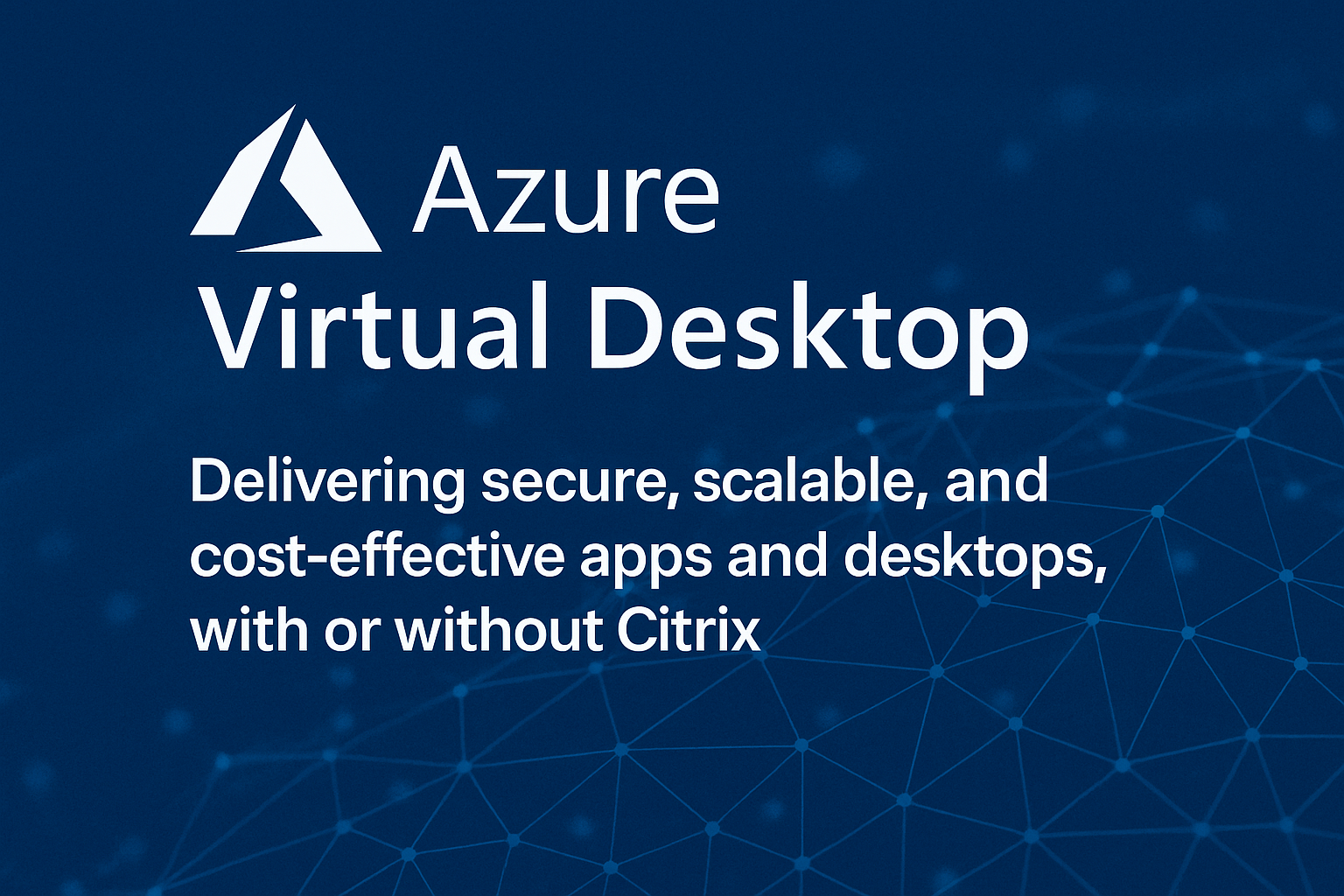Azure Virtual Desktop (AVD) has proven to be one of the most flexible and secure ways to deliver applications and desktops to users — whether they’re in the office, working remotely, or spread across multiple countries.
Compared to traditional VDI solutions like Citrix, AVD often delivers a lower total cost of ownership by removing the need for separate licensing, infrastructure, and management layers. It’s natively integrated with Microsoft 365 and Azure, so there’s no additional platform to maintain — and you only pay for the resources you use, rather than fixed capacity that might sit idle.
We’ve rolled out AVD for eight different customers so far, managing a total of 290 hosts every day. These environments vary widely in industry, size, and complexity — but AVD has adapted to each without forcing a “one-size-fits-all” approach.
Where Citrix Fits Into the Picture
While AVD is often the better fit for most organisations, Citrix can still add value — particularly where teams already have deep Citrix expertise or existing processes built around it. In these cases, Citrix can be layered on top of AVD, allowing organisations to retain familiar management tools and the HDX protocol, while still benefiting from AVD’s native Azure integration, flexible scaling, and pay-as-you-go model.
Some reasons a business might choose to run Citrix on top of AVD include:
- Existing Citrix expertise – Maintain current skills, processes, and operational workflows while modernising infrastructure.
- Unified access – Present on-premises Citrix and AVD resources together in a single user portal.
- Hybrid or multi-cloud support – Manage Azure, on-prem, and other cloud workloads in one place.
This hybrid approach is best suited to teams that need specific Citrix features or a phased transition, rather than a complete platform shift.
Real-World Customer Examples
Example One: A utilities customer running large projects with diverse user needs – some requiring published applications, others full desktops – was burdened by the complexity and cost of an on-premises Citrix environment. Codify is consolidating their operations onto Azure Virtual Desktop (AVD) as part of a broader platform shift, streamlining the environment, aligning access to user roles, and cutting operational and licensing costs.
Example Two: An Australian retailer needed a flexible, secure, and scalable virtual desktop solution to support operations across multiple countries and departments. They chose Azure Virtual Desktop (AVD) over Citrix, giving staff access to both applications and full desktops, and providing IT teams with secure, privileged jump boxes. The move streamlined access, strengthened security, and boosted operational efficiency across the business.
Both of these scenarios demonstrate how AVD adapts to varied requirements — with or without Citrix.
Why AVD Works So Well
- Strong security – Tight integration with Azure identity and access controls, plus the ability to isolate sensitive workloads.
- Easy scalability – Spin resources up or down as demand changes.
- Flexibility – Deliver full desktops or just the apps people need via Intune.
- Cost control – Lowest running and licensing costs in the market. Pay only for what you use, with the flexibility to right-size and schedule resources for maximum efficiency.
Our Recommendation
From our experience, a well-managed AVD environment delivers consistent performance, robust security, and cost efficiency — all while giving users a seamless experience. It’s adaptable enough to handle project-based work, long-term operations, and high-security admin access.
Citrix still has a place when your team’s expertise, processes, or requirements make it the right fit — but for most organisations, AVD provides the simpler, more cost-effective path to delivering apps and desktops at scale.
Ready to see what AVD could do for your business? Contact us to assess your current environment and map out the most efficient way to deliver apps and desktops for your team.

